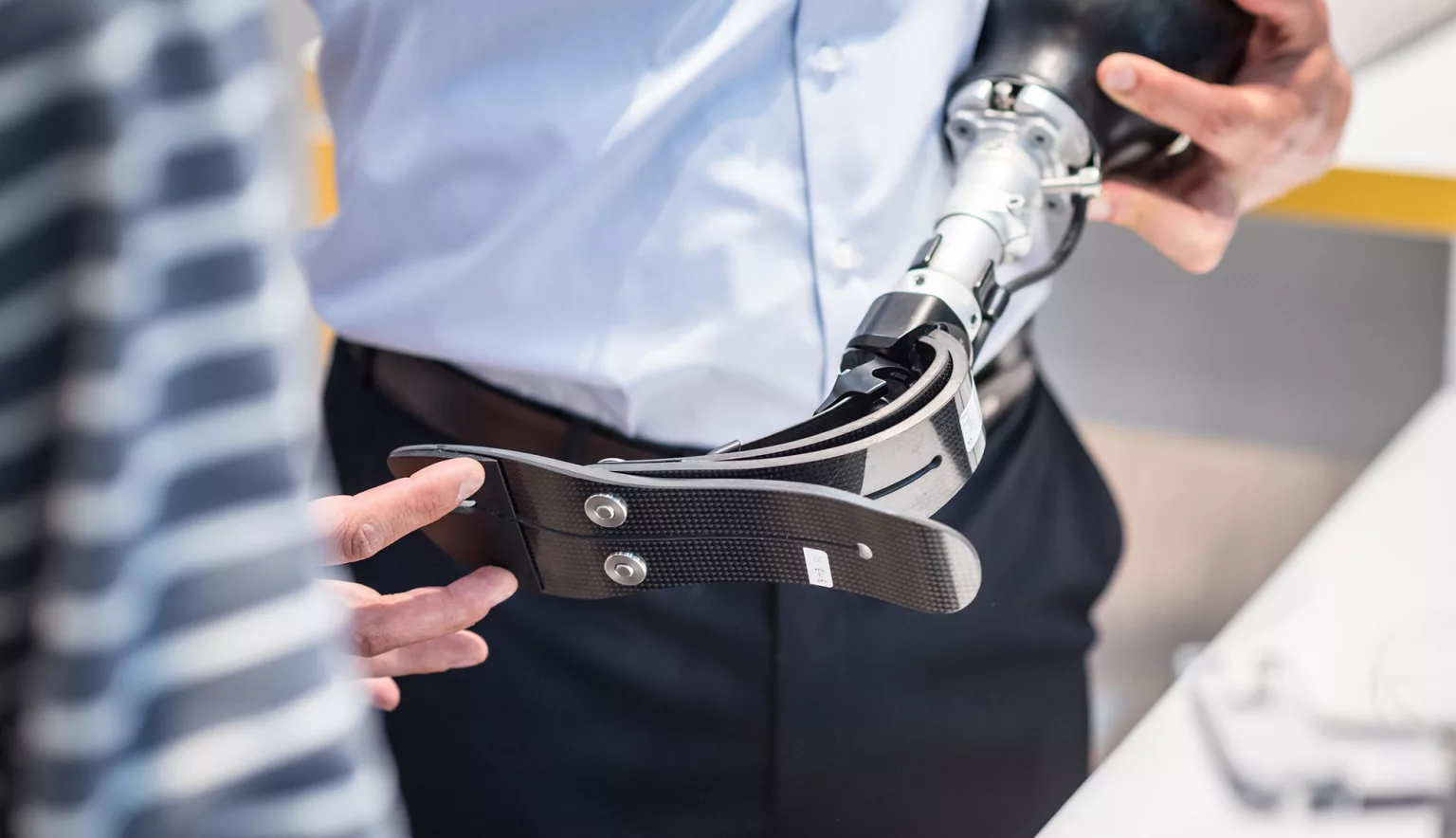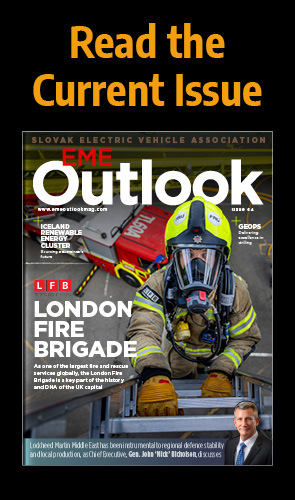Össur continues to redefine the boundaries of prosthetic possibility, investing heavily in R&D to ensure its products become accessible to everyone who needs them.
FACILITATING FREEDOM
“In 1996 I became a below the knee amputee.
“I was studying Rehabilitation Science and Physiotherapy at Leuven in Belgium at the time, and decided to complete my course and pursue an orthopaedic direction. When I finished, I got involved in a European project which was focused on monitoring important physical measurements inside prosthetic legs.
“It was rather early on in my prosthetic rehabilitation that I started using one of the company’s silicone liners. I saw the ICEROSS® brand, asked my therapist what it was, and he said it originated from Iceland, which made me want to explore the connection between Iceland and prosthetics.
“The company was also involved with the post-graduate study. I connected with the then VP of R&D and asked him in 2001 if I could complete an internship with the company. Thankfully that happened, I came here, and the rest is history.”
Kim De Roy is talking about Össur.
Now serving as the firm’s Executive Vice President of Research and Development, he has witnessed a remarkable 18 years of pioneering development since he joined as a young intern.
It is an ongoing journey of discovery, one that De Roy succinctly summarises in one word.
“Innovation,” he says. “This is how I would describe my time at Össur to date. If you look at what we did back in 2001 – some of those basics are still there, but we have advanced so much since thanks to new technology platforms.
“Products are more functional, durable and reliable than ever before, and the addition of bionics has dramatically changed the industry altogether. The user of the bionic prosthetic leg now has a device that assists in keeping the patient safer and more functional every step of the way. When prosthetic devices are able to prevent stumbles and falls, you know we are on the right track to provide a life without limitations.”
The past two decades have also seen Össur grow markedly as a company, expanding from a tightknit team of 300 to more than 3,500 dedicated people around the world today.
Crucially, however, despite this tenfold increase in headcount, the determination to impart the organisation’s mantra of life without limitations remains the same. “We were a small group of people determined to make a difference to people’s lives, and that feeling I first had is still with me,” De Roy adds.
Indeed, Össur has remained laudably agile during this growth phase, evidenced by its continuing track record of delivering unique products to the market.
KNOWLEDGE IS POWER
Central to this standout track record is an unwavering commitment to research and development.
Around five percent of company revenue is reinvested into R&D activity, a high figure and something which De Roy believes helps set Össur apart in the industry.
“Our history is based on innovation,” he says. “We talk about trade up in technology and a trade up in functionality, and when we stop innovating, we stop improving the outcomes for people who need our solutions. This could be anybody from professional athletes to the elderly who treasure the confidence that comes from being able to trust their mobility.”
The EVP has oversight of operations across five countries, the major research hub being in Iceland where the majority of prosthetics work is carried out.
Upper and part of lower extremity prosthetics are respectively studied in bases in Scotland and Germany, while Össur’s facility in France deals with soft goods like bracing and supports, along with compression therapy products. The firm also has R&D presence in California, where bracing and post-operative solutions form the primary focus of activities.
This work results in a pipeline of products that continually raise the bar of orthopaedics, De Roy emphasising the health economic benefit to be reaped from committing to quality and evidence-based product development.
“For healthcare providers it pays to invest in superior prosthetic products for patients,” he adds. “It can prevent reinjuries and all of the related costs involved.
“We have come a long way, but there is more to be done, especially when it comes to elderly patients, and with the right technology we can ensure fewer people suffer from falls and other mobility issues.”
POWER AND CONTROL
One such solution, a programme which has been prominent for the last 15 years, comes in the field of power prosthetics.
“POWER KNEE™ was the first motorised prosthetic that allowed us to lift the patient out of the chair,” De Roy recalls. “It is robotic and effectively walks for the user, reducing the risk of falls and stumbles and taking the energy out of walking, providing unrivalled levels of security versus a passive prosthetic leg.
“In this case we are not only talking about replacing the joint mobility, but also the muscles around this joint that have been lost through an amputation.”
Össur is developing the third generation of this product family, an evolution which will open power prosthetics up to a much wider group of users thanks to its superior attributes – cutting-edge technology at a more affordable price, including longer battery life and reduced noise and weight.
“The other element we are looking at is the control mechanisms for these products,” adds De Roy. “There is a lot going on around the intelligence provided by microprocessors and sensors – currently they operate in sync with the patient but also think independently.
“One of the directions we’re looking at is giving that control back to the patient to make the product as intuitive as possible, giving the intentional control back to the user.”
De Roy cites an example involving bionic hands, where the company is looking at how it can send signals directly from the muscle rather than the surface of the skin.
“With this, the user no longer has to go through complicated sequences of actions to move their prosthetic,” he continues. “Instead, we want them to move and think in the way they used to before they lost their hand. Our aim is for people to be able to perform tasks like picking up a set of keys, grabbing a cup or opening a door with one intuitive motion.”
Össur is currently testing on four patients – two with bionic hands and two with lower extremity prosthetics.
A key priority for De Roy is to gain permission from the USA’s Food and Drug Administration to increase its testing base and collect more data, a process which he accepts may take several years to come to fruition.
LIFE WITHOUT LIMITATIONS
Looking even further into the future, De Roy hints at the potential of mind- or intent-controlled products to make an impact in the market, taking the definition of smart prosthetics to an entirely new level.
However, he is much more grounded when describing Össur’s immediate plans going into the rest of 2019 and 2020.
“Our basic priority actually involves ensuring the company is ready to deal with new regulations at a European level,” he explains. “These are coming into play in May 2020 and we will comply to make sure we are making the safest and most reliable products.”
From here the picture will expand into the wider mission, underpinned by the strapline life without limitations.
“We have some amazing products in the pipeline – products which we believe will change lives,” De Roy continues. “This has to be for all potential users, especially those who are less able to move independently and need us the most.
“Around 50 percent of amputees above the knee are not getting a prosthesis. The older these people get the less chance they have of being able to walk, and we are seeing disparity in these numbers as we move from one country to another. There are thus massive opportunities to give more people the chance to use prosthetics.”
Making such products more intuitive and available to a wider audience will be critical if Össur is to grasp the opportunity ahead of it, and De Roy, buoyant about the 18 years of discovery he has enjoyed to date, is stoutly optimistic.
He concludes: “Össur has a pipeline which fills me with confidence that we’re going to succeed. We speak through our products – the solutions are there, and we need to generate as much awareness as we can in order to give people a chance to improve their lives.”




















